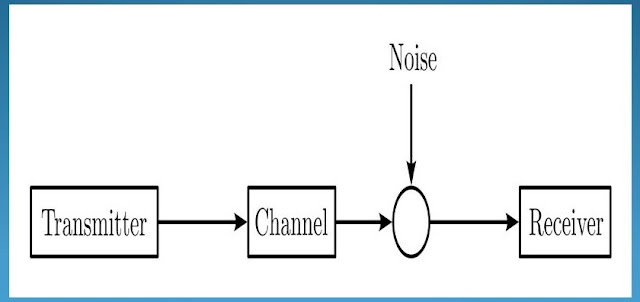Communication Mode:
Communication mode defines the direction of data flow in the communication. There are three types of possible modes:
1. Simplex:
In this mode, transmission is possible in only one direction similar to a one-way street. A simplex line can either only receive or send data. For example, communication between keyboard and CPU, remote and television, loudspeaker, etc.
2. Half-duplex:
In this mode, transmission is possible in both directions, but not simultaneously (i.e. one direction at a time). A half-duplex line can both send and receive data, but one at a time. For example, Walkey-Talkey, wireless microphone, cc camera.
3. Duplex (Full-duplex):
In duplex mode transmission is possible in both directions simultaneously, similar to a two-way street. A duplex line is also known as a full duplex. For example, Mobile/ telephone communication.
Types of Computer Networks:
1. Local Area Network (LAN):
It is the interconnection of computers in a limited geographical area like in a single room, rooms within a building, or buildings on one site.
- It covers a 10m-1000m distance.
- It has a faster speed.
- It has the smallest number of computers.
- It uses twisted pair cable as a transmission media.
- For example ethernet, wifi.
 |
| Fig: Local Area Network |
Advantages:
1. Data transmission speed is faster than others.
2. It has higher security.
3. It is cheaper, easy to set up.
Disadvantages:
1. It is limited only to a small area.
2. It connects a small number of computers than others.
2. Metropolitan Area Network (MAN):
It is extended up to a city or a larger geographical area than the LAN.
- It covers a 5km to 50km distance.
- It has a slower speed than LAN.
- It has a larger number of computers than LAN.
- It used twisted pair cable, and fiber optic as a transmission media.
- For example- cable TV.
 |
| Fig: Metropolitan Area Network |
Advantages:
1. It is spread to a larger area than LAN.
2. Easier network monitoring and security.
3. Connects multiple buildings within a city.
Disadvantages:
1. Hard to Set Up: Difficult to start.
2. Difficult to Keep Running: Not easy to keep working.
3. Expensive: Costs a lot of money.
4. Can be Hacked: Can be broken into by bad people.
5. Not Everywhere: Not available everywhere.
6. May Not Work Together: Different parts might not fit well.
7. Not Super Fast: Not very, very fast.
3. Wide Area Network (WAN)
It is used to interconnect computers spread to a larger geographical area like in separate cities or countries.
- It covers a 1000000km distance.
- It has the slowest speed.
- It has the largest number of computers.
- It uses fiber optic, and satellite as a transmission media.
- For example Internet.
 |
| Fig: Wide Area Network |
Advantages of Wide Area Network (WAN):
1. Connects Far Places: Links distant locations.
2. Big Sharing: Allows sharing across big areas.
3. Global Access: Provides access around the world.
4. Central Control: Can be controlled from a central place.
1. Disadvantages of Wide Area Network (WAN):
2. Costly: Expensive to set up and use.
3. Not Always Fast: Speed may vary.
4. Complex Management: Needs careful handling.
5. Security Challenges: Can have security problems.
Transmission Media:
It refers to the wires, cables, and other means through which data travels from its source to its destination. Transmission media is also called communication media.
Types of Transmission media:
1. Guided Media (Bounded or weird) media
The media that use cable or wire to transfer data and information among computers is called guided communication media. This is an easy, fast, and secure way to transfer data and information from one computer to another. The different types of wire or cable are used for a computer network. The three types of wire or cable are:
a. Twisted pair Wire
b. Co-Axial Cable
c. Fiber Optic Cable
a. Twisted Pair Wire:
Twisted pair wire is made of copper and a pair of wires are twisted together and insulated
with plastic. It is commonly used in communication media. This is also widely used in
landline telephones. RJ-45 connector is the most popular connector used in twisted-pair
wire. The two types of twisted pair wire are:
a. UTP (Unshielded Twisted Pair)
b. STP (Shielded Twisted Pair)
b. Co-Axial Cable
Co-axial cable is made of copper or aluminum wire with an inner conductor surrounded
by an insulating layer and again surrounded by conducting shield. So it consists of two
conductors inner and outer conductors. It has high bandwidth and noise immunity. It
is widely used in long-distance telephone lines. BNC and T connectors are the most
popular connectors used in co-axial cable.
c. Fiber Optic Cable
Fiber optic cable is made of plastic or glass fiber to transmit data. It uses light waves to carry data signals from one end of the cable to the other end. It is of high quality and transmits data signals at a very high speed. It is more powerful than twisted pair cable and co-axial cable. So it is widely used cable, especially in ISP (Internet Service Provider). ST (Straight Tip) connectors, SMA (Screw-Mounted Adaptors), SC (Subscriber Connector), etc. are the common connectors used in fiber optic cable.
2. Unguided Media (Unbounded or wireless) media
Unguided communication is a communication channel in which data and information are transferred between two devices without using wire or cable. Nowadays, wireless technology is used in communication technology. It uses radio signals for receiving and transmitting electronic data. Permission for the use of wireless technology is to be taken from the Nepal government. The three types of wireless communication are:
a. Radio Wave
b. Micro Wave
c. Satellite Communication
Transmission Impairements Terminology:
1. Jitter
2. Attenuation
3. Distortion
4. Noise
5. Echo
6. Singing
7. Bandwith
Basic Concept of Networks Architecture:
The network architecture expalin














